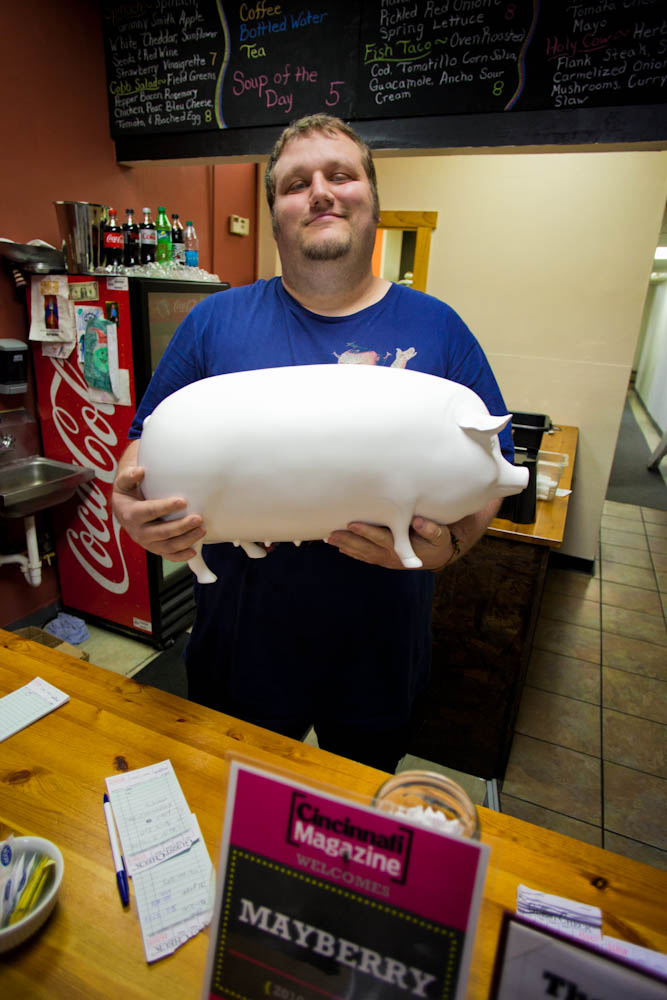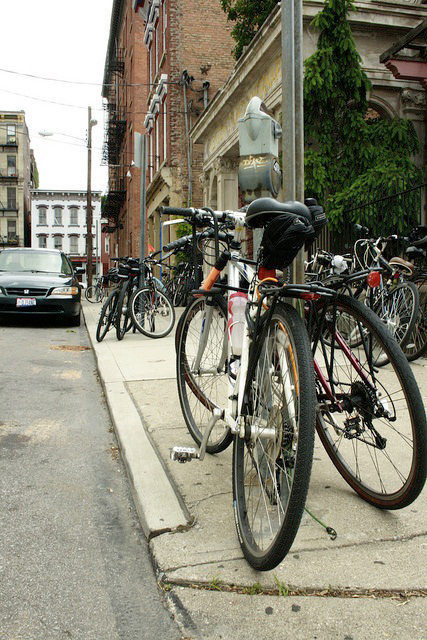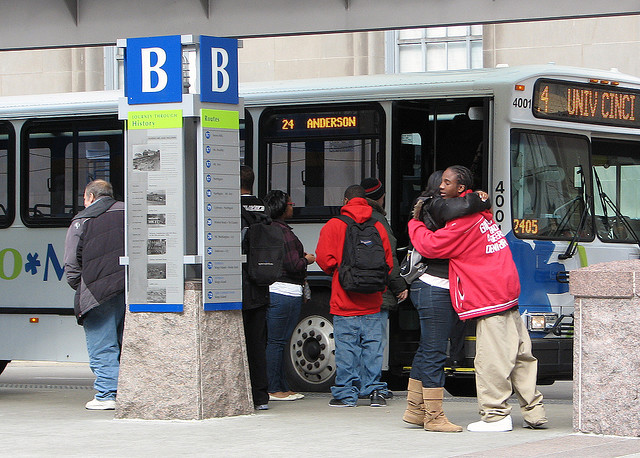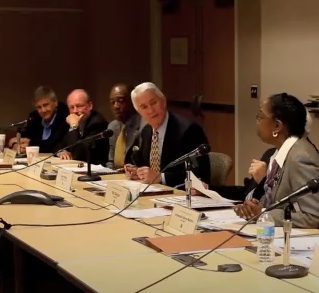 Six months have passed since the opening of Mayberry Foodstuffs in downtown Cincinnati, and for Chef Josh Campbell and his business partners, it is time to try something new. The team will open a new restaurant called The Skinny Pig in East Walnut Hills this May. The restaurant, Campbell says, will feature flatbreads, salads, and his specialty – pork.
Six months have passed since the opening of Mayberry Foodstuffs in downtown Cincinnati, and for Chef Josh Campbell and his business partners, it is time to try something new. The team will open a new restaurant called The Skinny Pig in East Walnut Hills this May. The restaurant, Campbell says, will feature flatbreads, salads, and his specialty – pork.
When Herbert Hood, owner of the buildings on Woodburn Avenue , first visited Mayberry Foodstuffs, he asked Campbell to open another small grocery concept in place of the beloved, and recently closed, Lucky John’s Market in his neighborhood.
After learning about Campbell’s cooking background, the pair decided that opening a restaurant would be a great use for the 750-square-foot space. After signing a 15-month lease the whirlwind renovation process, for which the World Food Bar group has become known, began.
Campbell, along with his business partner Jerry Murphy and sous chef Kevin O’Connell, say they are jumping in to the new concept and location head first.
“Everybody says when opportunity knocks, you should go for it,” Campbell says. “Why not? It’s a natural expansion of what we’re already doing, and we want to reach new people. I’ve surrounded myself with such great people, and it just makes sense.”
Collectively, the team works interchangeably between the Mayberry restaurant as well as Foodstuffs, and The Skinny Pig will be another hock of the hog. The pressure smoker for The Skinny Pig will be housed at the Vine Street kitchen, and the entire team, from Campbell to the dishwasher will work together to complete the trifecta.
The Skinny Pig will be located in the DeSales Corner business district of East Walnut Hills which already boasts other restaurants, luxury apartments and art galleries, and Campbell believes the neighborhood is the next up and coming area in Cincinnati.
“The downtown area is beginning to be saturated with restaurants,” says Campbell. “In this area you have Blue Cross Blue Shield, St. Ursula Academy with students who can go off campus for lunch, and several doctor’s offices filled with people looking for healthy, flavorful food options.”
Campbell says that the main menu concept is a variety of blue cornmeal flatbreads with assorted toppings, baked to order in a wood burning oven, along with unique salads. The goal is to operate an eatery that is accessible to every palate, with offerings running the gamut from wild mushroom pate to smoked pork shoulder, and everything in between.
After the first 30 days of operation, he intends to open an expansive courtyard, with an outdoor grill and live weekend music, that can accommodate an additional 20 to 25 people. With exposed brick, an open kitchen, and a relaxed atmosphere, visitors will experience a homey, accessible meal in a sit down, waited-table style, run by locals that genuinely care about the area and the dining experience.
“Lots of people in the city are investing in different areas of the city’s core,” says Campbell. “The suburbs – they come and go. We need to get back to that era of small mom and pop places that care about their customers and build relationships. I’m a businessman, but my goal is to grow and make sure that the people that are around me can survive, live well, and have fun at work. I’m trying to get that message out to people – to just do the right thing.”
Photograph of Chef Josh Campbell inside Mayberry by Jake Mecklenborg for UrbanCincy.






